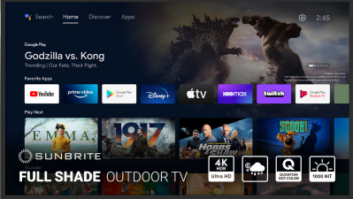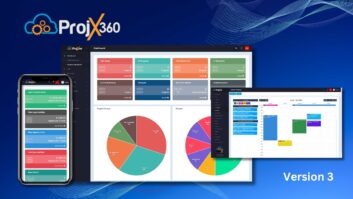
According to research from IDC, the IoT industry will reach $745 billion in spending this year, and will surpass the $1 trillion mark by 2022. With this market value and more than 23 billion (and growing) connected devices around the world, competition in the IoTlandscape is fierce. But competing alone can be challenging. In a recent survey, 66% say that a skills gap is hindering success, and another 75% say their attempt at implementing IoT initiatives have failed. But business leaders must continue to look for ways to efficiently modernize and remain competitive.
If you’re looking for a solution to this problem, here are three essential factors to consider as you take your company through a digital transformation in today’s IoT landscape.
Walk before you run
Before you even walk, it’s essential to identify the market gap you’re trying to fill and what its potential impact might be on the industry. Then, do one or two things well, rather than trying to crank out multiple, half-complete projects. They say slow and steady wins the race, and that’s true in your IoT transformation, too.
For example, several years ago, a property management company was aspiring to fill the gap of keyless entry into properties. It developed a then-revolutionary cloud-based, keyless entry system that allowed hosts of vacation rentals, like AirBnB and VRBO, to provide a PIN code to the guests, rather than a key. Additionally, the system allowed the hosts to monitor the comings and goings of guests and cleaning staff. Once that solution became successful and was quickly adopted by the industry, the company took its strategy a step further by adding a home control offering. This enabled guests to experience a full smart home experience from lights to thermostats and security options.
When companies walk before they run, they’re able to remain agile as they introduce new solutions to the growing market, leading to long term success.
Find the right partner
If you’re looking to tap into a new market, or implement a new initiative in your IoT transformation, consider finding a partner who can add to your momentum. More specifically, a technology partner who combines the benefits of an app, cloud service, and hardware into one simplified platform — making the process seamless for you and, in turn, your customers.
To put this into perspective, let’s look at one of America’s largest energy providers who began exploring home control capabilities to add to their consumer offering. They started the process with 15 possible partners who fit the bill at first glance. Yet, as the conversations went deeper and more capabilities — or lack thereof — became exposed, the company quickly realized that almost none of the potential partners had what they needed. In fact, only one out of the original 15 had the proper resources in place to meet its needs. The partner had the complete package: a white-label application, proper hardware fit for smart energy monitoring, cloud infrastructure to support future initiatives, and the flexibility to create new features and services as the energy company pleased. The partnership has led to the rollout of one solution, with more in the pipeline for its other brands.
By incorporating the right partner, you’ll have the resources to execute faster and ahead of the competition — while saving both time and money as you scale your business to the next level.
Leverage data to drive growth
Gartner states that by 2020, more than 40% of data analytics projects will relate to improving the customer experience. Companies must leverage data to their advantage. On a macro-level, data can determine the direction of the overall innovation road map for future product releases and features. Not only can data be beneficial internally, but externally, too, by improving customer relationships and client satisfaction. With micro- level insights, companies can utilize the right data to build a more customized experience for their users.
If you’re just getting started with your data journey, it can be challenging to know precisely how to use it. Take time to determine an end goal that will add value to your overall business, with your customers top of mind. As an example, one company turned to data to enhance its IoT clean energy subscription product. The company used data insights from the platform to develop a new feature that reduced power to unused appliances during peak hours. As a result, customers saw lower monthly energy bills, leading to brand loyalty and an increase in customer retention. This shows that, when teams analyze data to meet a specific goal, they can harness insights that are truly useful, versus getting lost in the swamp of data that may or may not impact the business.
How you leverage these strategies to transform your IoT strategy depends on your current needs, gaps in the market, and future innovation road map—but with the right mindset, the right partner, and right data, you can make that transformation faster and more smoothly than you ever thought possible. In turn, you’ll be setting your company up for success today, tomorrow, and in the years to come.
Mark Samuel is the CEO of Ezlo Innovation. With expertise in strategic planning and digital consumer systems, he has Ezlo focused on initiatives that will transform the home automation landscape. Most recently, Mark served as the CRO at Cirrent, which was sold to Cypress Semiconductors in 2018, and as the COO/EVP at Savant Systems. He has overseen three acquisitions in the last 18 months, with more to follow.
See also: How to Keep Employees Engaged During a Growth Period












